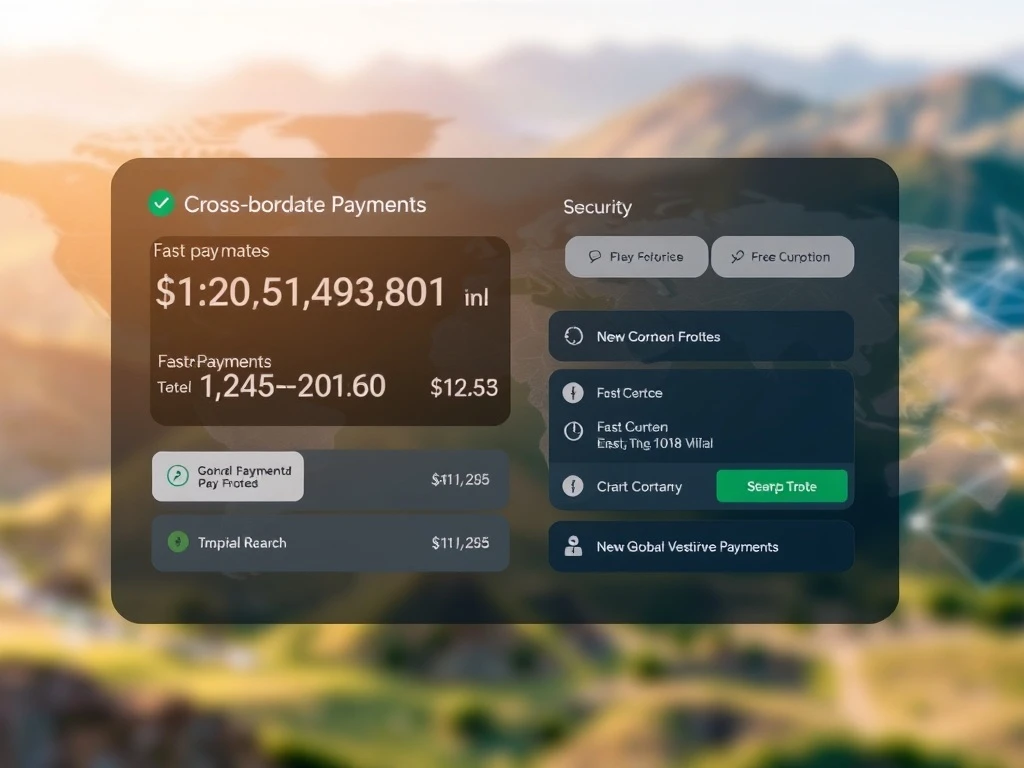Global commerce is expanding at an unprecedented pace, connecting businesses and consumers across every continent. Yet, the traditional landscape of international payments often feels stuck in a bygone era, plagued by frustrating delays, opaque fees, and cumbersome processes. Imagine a world where your international transactions are as swift and clear as a local transfer. This isn’t a distant dream; it’s the powerful reality being shaped by the combination of live exchange rates and instant payments, fundamentally transforming how businesses handle their cross-border payments.
Why Are Instant Payments Crucial for Modern Global Operations?
For too long, international payments were synonymous with waiting. Funds could take days, even weeks, to clear, creating significant bottlenecks in supply chains, delaying product launches, and stifling cash flow. These traditional systems, often reliant on outdated banking infrastructure, were a major impediment to the agility modern businesses demand.
Today, advanced financial technology has dramatically altered this landscape. Platforms now offer truly instant payments, settling funds within minutes, not days. This speed is a game-changer for any enterprise engaged in global trade. Consider the immediate benefits:
- Enhanced Cash Flow: Rapid settlements mean your funds are available sooner, improving liquidity and allowing for quicker reinvestment or operational expenses.
- Streamlined Supply Chains: Pay suppliers instantly, ensuring raw materials arrive on time and production schedules remain uninterrupted.
- Improved Supplier Relationships: Timely payments build trust and strengthen partnerships, potentially leading to better terms and greater reliability.
- Reduced Risk: Less time in transit means less exposure to market fluctuations or payment disputes.
This rapid movement of money ensures your business operations continue without interruption, regardless of geographical distance. The era of unnecessary, frustrating delays in cross-border payments is effectively over.
How Do Live Exchange Rates Transform Financial Planning and Control?
Financial uncertainty has long been a significant challenge in international commerce. Traditional exchange rates were often fixed for a period or involved hidden markups, making it difficult for businesses to predict the exact cost of a transaction. This lack of real-time accuracy complicated financial planning, budgeting, and pricing strategies, often leading to unexpected losses or reduced profit margins.
Live exchange rates completely solve this issue by providing unparalleled transparency for every transaction. Businesses now see the exact conversion rate at the moment of payment, eliminating guesswork and surprise fees. This real-time data empowers companies with:
- Precise Costing: Know the exact amount being sent and received, enabling accurate budgeting and pricing.
- Reduced Currency Risk: Minimize exposure to volatile currency markets by locking in rates instantly.
- Better Decision-Making: Make informed financial choices based on current market conditions.
- Enhanced Trust: Transparency in pricing builds confidence with international partners and customers.
The flexibility to send payments in a variety of currencies, coupled with real-time rates, means you always know the exact cost. This level of clarity is invaluable for strategic financial management in global trade.
Simplifying Cross-Border Payments: The End of Pre-Funding Hassles?
One of the most cumbersome aspects of traditional international payments was the requirement to pre-fund foreign currency accounts. This practice tied up valuable capital in various currencies across different bank accounts, adding layers of complexity and administrative burden. Managing these multiple accounts and ensuring sufficient balances was a constant drain on resources and agility.
Modern financial technology has largely eliminated this outdated practice. Today, you can send funds directly from a single digital wallet or business account, often without needing to pre-fund foreign accounts. This streamlined process simplifies international transfers greatly. For a global brand, this kind of agility is essential. It means:
- Optimized Capital: Your working capital remains liquid and accessible, not locked away in dormant foreign accounts.
- Reduced Administrative Overhead: No more juggling multiple bank accounts or managing complex foreign currency balances.
- Faster Execution: Direct transfers remove intermediaries and unnecessary steps, speeding up the entire payment cycle.
This direct method of handling cross-border payments significantly reduces operational friction, allowing businesses to focus on growth rather than managing complex financial logistics.
The Strategic Advantage of Multi-Currency Flexibility in Global Trade
Paying global suppliers, freelancers, or employees in their local currency is not just a courtesy; it’s a strategic imperative. It fosters stronger relationships, demonstrates respect, and often leads to better pricing or terms. Multi-currency support is a crucial tool for successful international commerce, transforming the dynamics of your global interactions.
The ability to send and receive payments in various currencies provides much greater control over your finances during global transactions. This flexibility allows businesses to:
- Build Stronger Partnerships: Paying in local currency can reduce costs for your recipients and show you value their convenience.
- Negotiate Better Deals: Suppliers may offer more favorable terms when they receive payments in their preferred currency without conversion hassles.
- Expand Market Reach: Easily transact with partners in diverse regions without being limited by currency constraints.
- Mitigate Conversion Fees: By sending the exact local currency, you can sometimes avoid double conversions or hidden fees imposed by traditional banks.
This capability makes your global trade feel more localized and efficient, ensuring smooth transactions become the standard rather than the exception. It’s a vital component of effective cross-border payments management.
Ensuring Security and Efficiency in Cross-Border Payments: Your All-in-One Solution
In the digital age, businesses need a single, powerful platform to manage their international financial operations. An all-in-one application that brings all your payment features together offers unparalleled convenience and oversight. Crucially, security must be the absolute top priority. Your financial transactions, especially across borders, must be safeguarded against fraud and cyber threats.
Modern platforms designed for cross-border payments integrate robust security measures, including advanced encryption, multi-factor authentication, and fraud detection systems. This integrated approach makes all your business transactions more secure and flexible. You can manage everything from one central place, providing a unified method that:
- Boosts Efficiency: Centralized management reduces the need to switch between different systems or platforms.
- Reduces Human Error: Automation and a unified interface minimize manual data entry and potential mistakes.
- Enhances Oversight: Gain a comprehensive view of all international transactions from a single dashboard.
- Strengthens Security Posture: Benefit from enterprise-grade security protocols applied consistently across all your payments.
By leveraging such a platform, businesses can navigate the complexities of global finance with confidence, knowing their transactions are secure and their operations are streamlined.
The Future of Global Trade is Here
The combination of live exchange rates and instant payments is not just an incremental improvement; it’s a fundamental shift in how global commerce operates. By eliminating the friction of traditional systems, these innovations empower businesses of all sizes to expand their reach, optimize their financial operations, and build stronger international relationships. The future of global trade is fast, transparent, and seamlessly connected, driven by these powerful technological advancements in cross-border payments. Embrace this winning combo to unlock unprecedented growth and efficiency for your enterprise on the global stage.
Frequently Asked Questions (FAQs)
1. What are the main benefits of using live exchange rates for cross-border payments?
Live exchange rates provide real-time accuracy, eliminating guesswork and hidden fees. This transparency allows businesses to make precise financial planning decisions, accurately budget for international transactions, and reduce exposure to currency fluctuations, leading to more predictable costs.
2. How do instant payments improve cash flow for businesses?
Instant payments ensure that funds are settled within minutes, not days. This rapid availability of capital significantly improves a business’s cash flow, allowing for quicker reinvestment, timely payment of operational expenses, and reduced reliance on credit lines. It keeps your money working for you, not tied up in transit.
3. Is pre-funding foreign accounts still necessary with modern payment solutions?
No, most modern cross-border payment solutions eliminate the need for pre-funding foreign accounts. Businesses can now send funds directly from their primary digital wallet or business account, keeping capital liquid and reducing the administrative burden associated with managing multiple foreign currency balances.
4. Why is multi-currency flexibility important for global businesses?
Multi-currency flexibility allows businesses to pay and get paid in various local currencies. This fosters stronger relationships with international partners, as it reduces their conversion costs. It also provides businesses with greater control over their finances, potentially leading to better negotiation terms and smoother international transactions.
5. How secure are modern instant cross-border payment platforms?
Modern platforms prioritize security with advanced measures like strong encryption, multi-factor authentication, and sophisticated fraud detection systems. They provide a secure, unified environment for managing all international transactions, significantly reducing risks compared to traditional, fragmented methods.
























